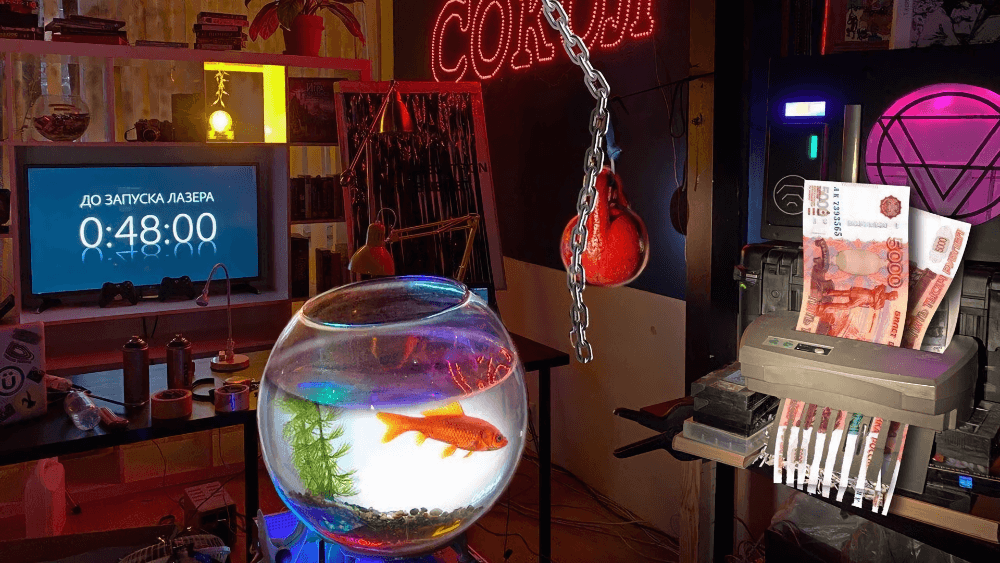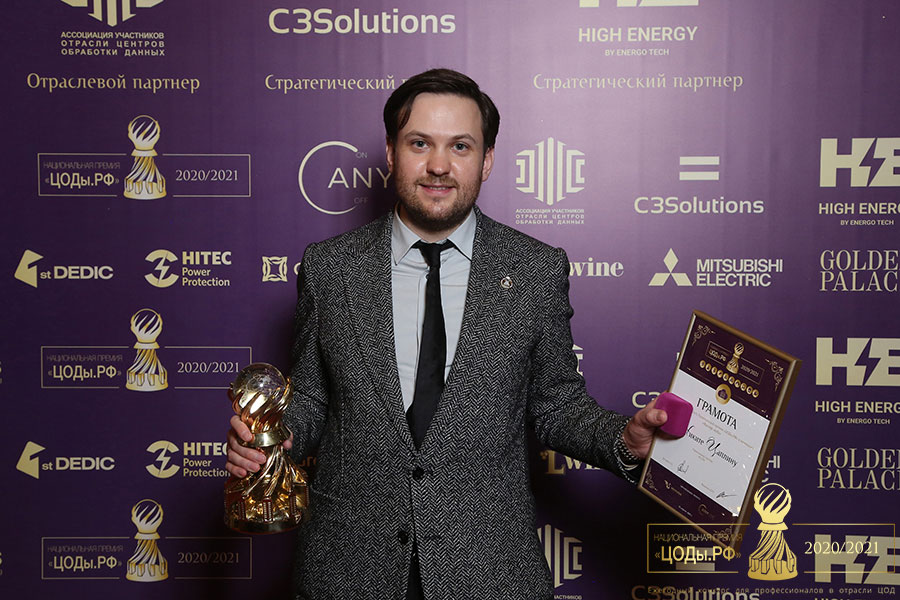
April ends very well for RUVDS! We won the annual competition among professionals in the data center market and received the TsODy.RF award in the Creative of the Year nomination. Remember that emotional hacking quest we did in August 2020? Had a lot of fun, right? They gave us a prize for it. Who missed the posts about this crazy game - details inside.
A little about the competition

It has been organized for the fifth year by the organizers - marketing companies Media Grus and AnyLine. The prize is awarded in several nominations , this time there were 13 of them. Winners are determined by the community of prominent professionals in the Russian data center industry by open voting.
The award in the category "Creative of the Year" is awarded for a creative approach to the promotion of services in our field. And we decided that we should definitely get involved with our unprecedented interactive ad campaign in the form of a quest in the room, which was attended by over 600 people. The total coverage of publications in the media and broadcasts in social networks about the game was about half a million people. We had no doubts about the victory! Quite ... well, almost (in fact, they were worried).
About the quest that brought victory
On August 12, 2020, we published a post with a video clip in which we offered Habr's readers to play a game with a cash prize. It was necessary to hack a real room created for the quest, which allegedly was the office of the Sokol web studio, which offers bed hosting services. The room was crammed with IoT devices that had to be controlled from the company's website .
The plot of the quest was that the owner of the company Andrei Sokolov, who earned a certain amount of hosting services on a self-assembled server and the creation of weird sites, flew to Bali. He hid the remaining 200,000 rubles in this office, which he provided with "smart" protection from robbers with a broadcast tracking system on the same site. But he hid them not in a safe, but in a shredder, which, when trying to break in, begins to destroy the bills so that the money does not go to the robbers.
According to the scenario, 1000 rubles are destroyed every hour, which stimulates the participants to think and act quickly - after all, the winner takes the amount remaining at the time of the hack. A hack should be a short circuit, which will lead to the control of IoT devices through the site and which will destroy the server. The short circuit had to be arranged like this: find the hidden laser, activate it by selecting the access code and direct it to the suspended weight, which, falling, broke the aquarium with water, which was flooded by the server. There were also hints . The live broadcast of what was happening in the office room was conducted on YouTube for two days: the lights were blinking, the phone was ringing, the Internet of things was raging.
How the quest went and who won it, taking 134,000 rubles, you can read here...
How the game was created
We published two detailed posts about the backend and the hardware of the project - there you can read step by step how everything was set up, tested, what were the difficulties and how we got out of them. And here, in a nutshell, about the main thing.

Backend
Consisted of six architectural units:
- The backend of game entities responsible for game mechanisms. Implementation in the form of a spring boot application that had three rest controllers (Megatron for laser, controller for captcha and controller for mapping Tilda pages), websocket endpoint for controlling gadgets and services with game logic.
- VPS. , , - . Turbo. VPS- RabbitMQ, DDoSa Cloudflare.
- . , .
- , .
- : , , .
- — «» , . , js- .

We did not use box solutions and smart home devices and did not use wireless connections, since all devices were at a maximum distance of 3 meters from each other. There were no relays or Arduino visible in the frame. Megatron-3000 is a laser module for cutting with manual focus LSMVR450-3000MF, 3000mW, 450nm. To reserve electricity and the Internet, we used the usual N + 1 scheme for data centers and a router based on OpenWRT with the mwan3 package to switch to a backup modem from Yota in the event of a break. More iron details and cinematic nuances here .
About rewarding

ceremony / The ceremony was as solemn as an Oscar. We had to compete for the award in the nomination with professionals from AFESPRO LLC, C3 Solutions and GreenMDC. As conceived, our project is not just an advertising campaign, even if such a creative one. The main message was that we are against the proliferation of virtual VDS / VPS on the market servers of such companies that provide low quality services, which offer hosting on non-professional equipment and which by this approach discredit the entire sphere of virtual server services in Russia. Thanks to the organizers and the jury of the award for highly appreciating our action. And many thanks to the "hackers" of Habr, who were so enthusiastic about the quest. You inspire!
